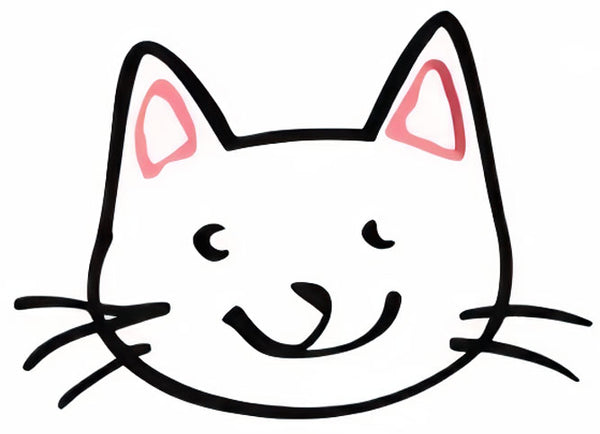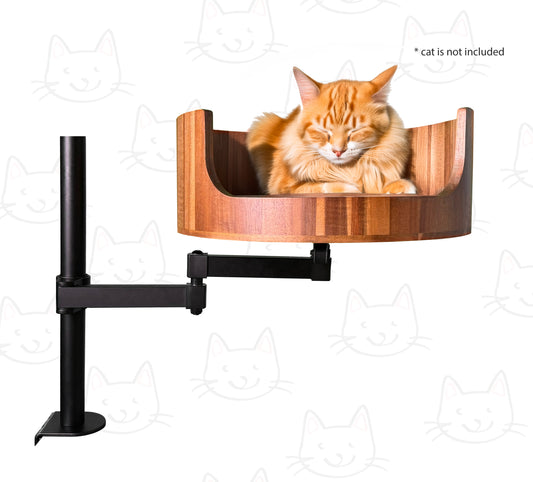
What Does Cat Tail Wagging Mean: Understanding Feline Signals
Share
Ever wondered what your cat is trying to tell you with their tail wagging? Understanding feline signals can help to decode their behavior and strengthen the bond between you and your furry friend. In this article, we will explore the different meanings behind cat tail wagging and provide insights into the subtle cues that cats use to communicate with us.
Desk Cat Nest is a renowned expert in feline behavior and will share their expertise on deciphering cat tail movements. From slow, gentle swishes to rapid, aggressive flicks, each type of tail wagging conveys a specific message about your cat's mood and intentions. By learning to interpret these signals, you can better understand your cat's needs, feelings, and desires. Stay tuned as we unravel the mysteries behind cat tail wagging and empower you to communicate more effectively with your beloved pet.
1. Cat tail wagging can indicate a range of emotions, from excitement to agitation.
2. Pay attention to the speed and direction of the tail wag to interpret your cat's mood accurately.
3. A relaxed swishing tail often signifies contentment, while a fast, aggressive wag may signal anger.
4. Understanding your cat's tail signals can help prevent potential conflicts or aggression.
5. It's essential to consider other body language cues and your cat's overall behavior to interpret tail wagging correctly.
Types of Cat Tail Wagging
There are several different types of tail wagging that cats use to communicate their feelings and intentions. The most common type is the straight-up tail wag, which usually indicates that a cat is feeling happy and confident. On the other hand, a tail that is flicking or twitching rapidly could mean that a cat is feeling agitated or anxious. Additionally, a tail that is held low or tucked between the legs may signal fear or submission.
Body Language and Tail Position
In addition to tail wagging, a cat's body language can provide important clues about their mood. For example, a cat with their tail held high and erect is likely feeling friendly and approachable, while a cat with their tail puffed up and arched may be feeling defensive or aggressive. Understanding how a cat's tail position relates to their overall body language can help pet owners interpret their feline companion's signals more accurately.
Common Misinterpretations of Cat Tail Wagging
It's important for cat owners to be aware of common misconceptions about cat tail wagging to avoid misinterpreting their feline friend's signals. One common mistake is assuming that a wagging tail always means a cat is happy. In reality, a cat's tail wagging can indicate a wide range of emotions, so it's essential to consider other body language cues and the context of the situation when determining what a cat's tail movements mean.
How to Respond to Cat Tail Wagging
When a cat wags their tail, it's important for pet owners to respond appropriately to support their cat's emotional needs. For example, if a cat is wagging their tail in a slow and deliberate manner, it may be best to give them space and avoid approaching them until they feel more comfortable. On the other hand, a cat with a tail held high and wagging playfully may be in the mood for interaction and playtime. By paying attention to their cat's tail wagging and responding accordingly, pet owners can strengthen their bond with their feline companion.
Frequently Asked Questions
What does it mean when a cat's tail is wagging?
When a cat's tail is wagging or flicking, it can indicate various things depending on the context. In general, a rapidly swishing tail signifies agitation or annoyance, while a slow wag could mean your cat is feeling playful or curious. It's important to pay attention to other body language cues to interpret your cat's tail movements accurately.
Is a cat wagging its tail a sign of aggression?
Yes, a cat wagging its tail rapidly can be a sign of aggression. This could be a result of feeling threatened, scared, or territorial. It's essential to give your cat space and observe their behavior to prevent any potential confrontations or attacks. Seek professional advice if you're unsure how to handle an aggressive cat.
Can cat tail wagging indicate that they are in pain?
While cat tail wagging isn't typically a direct indicator of pain, certain movements like a puffed-up tail or a tail held abnormally low could suggest discomfort or injury. If your cat is exhibiting unusual tail behavior along with signs of distress or physical symptoms, it's best to consult a veterinarian for a thorough examination and proper diagnosis.
In conclusion, understanding what cat tail wagging means is essential for deciphering your feline's behavior and emotions. The Desk Cat Bed provides a comfortable and secure space for your cat to relax and feel at ease, which can help reduce stress and anxiety that may lead to tail wagging. With its cozy design and high-quality materials, this bed is a valuable choice for cat owners looking to promote their pet's well-being and provide a safe haven for them to express themselves. By investing in a Desk Cat Bed, you can create a calming environment for your furry friend and enhance your bond with them.



















































